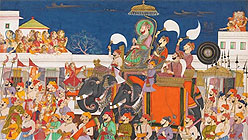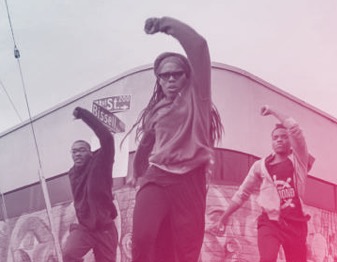It’s difficult not to contemplate the grotesque disparity of wealth that made the stunning objects in Maharaja: The Splendor of India’s Courts possible. On view through April 8, 2012, at the Asian Art Museum in San Francisco, the exhibition explores the privileged lives of India’s kings, from the early 18th century, when the disintegration of the Mughal Empire led to the rise of smaller kingdoms throughout the subcontinent, to the mid-20th century, when India’s maharajas, now pampered pets of their corpulent British overlords, mugged for Man Ray’s camera in Cannes and went on shopping sprees at Cartier.
Unfair allusions to the Occupy Wall Street movement aside (the complaints of OWS, however accurate, look positively bourgeois when contrasted with the abject poverty of a place like India), the exhibition is a well-paced, crisply presented affair. Organized by London’s Victoria and Albert Museum, the show fills three of the AAM’s ground-floor galleries, although never to overflowing. As a result, there’s plenty of room to contemplate each of the points the curators are trying to make via the almost 200 objects at their disposal.
Along the way, India’s kings are depicted as serene holy men, fierce warriors and sensitive lovers. We see their exploits in intricately detailed watercolors, as well as the objects they lived with, from furnishings to weaponry. If the pieces on view are any indication, these deified mortals valued, and no doubt demanded, the best their courts could offer. According to the evidence collected at the Asian Art Museum, they got it.

Turban ornament. 1750-1755. c. V&A Images/ Victoria and Albert Museum, London

Belt. 1850–1900. c. The Trustees of the British Museum.
As a group, India’s maharajas appear to have been fixated on precious gemstones, especially rubies, diamonds and sapphires, some of which are as big as a linebacker’s thumb. In fact, the jewelry on display is dazzling. Jaw-droppers include the mid-19th-century belt that’s anchored by a quartet of half-dollar sized diamonds, which are backed with reflective foil to give them even more depth. Then there are the turban ornaments, with their sprays of rubies, rows of emeralds and keystones of sapphires and yet more emeralds, the closest things these kings had to actual crowns.



